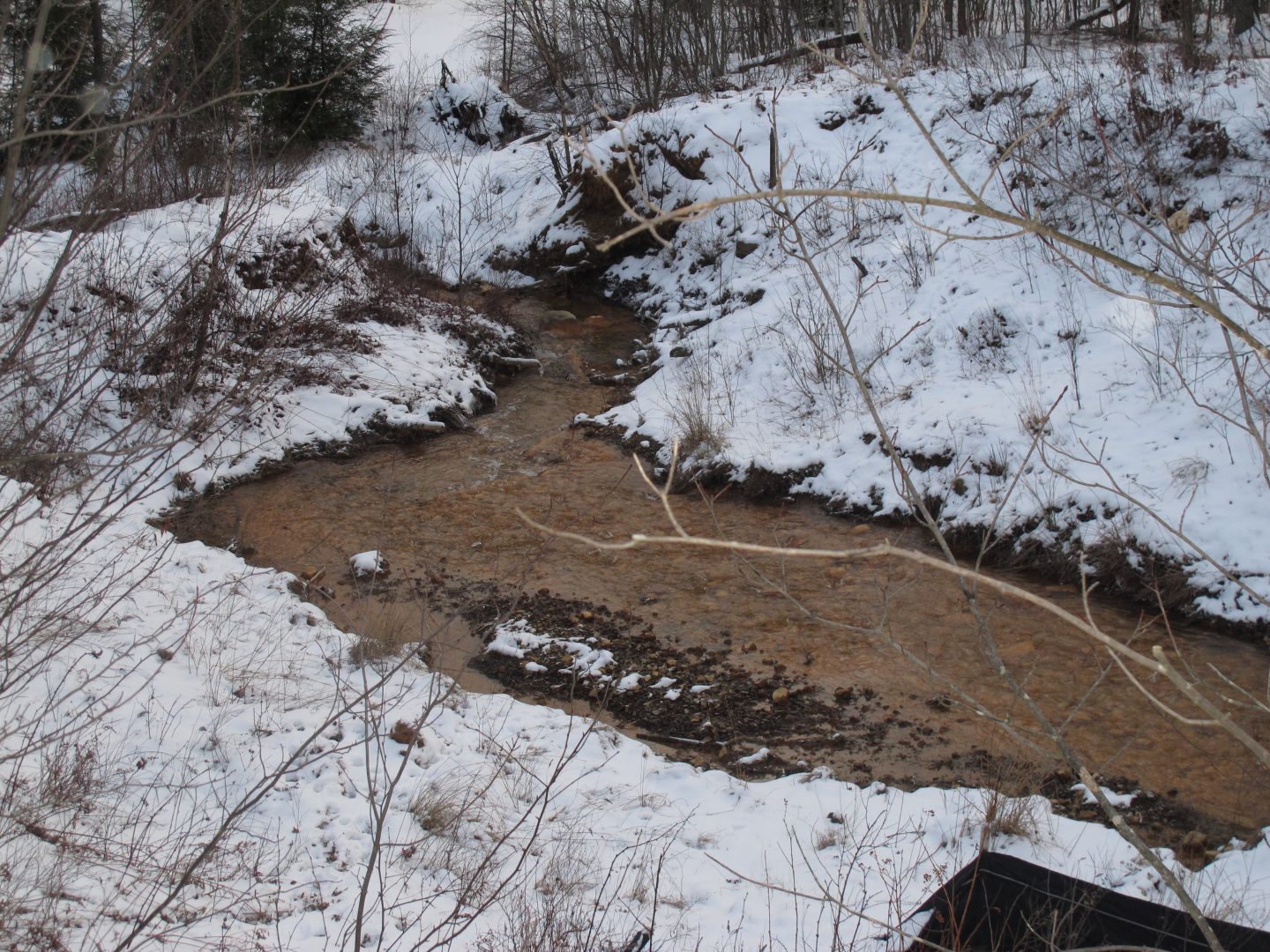
An orange colored stream flows from an abandoned mine in Tioga County. This tributary to Johnson Creek supports no invertebrate or aquatic life.
Susan Phillips / StateImpact Pennsylvania

An orange colored stream flows from an abandoned mine in Tioga County. This tributary to Johnson Creek supports no invertebrate or aquatic life.
Susan Phillips / StateImpact Pennsylvania

Susan Phillips / StateImpact Pennsylvania
An orange colored stream flows from an abandoned mine in Tioga County. This tributary to Johnson Creek supports no invertebrate or aquatic life.
Airdate: Thursday, January 20, 2022
The Pennsylvania Department of Environmental Protection says a third of the state’s streams are impaired or polluted — meaning those waterways are unsafe for aquatic life, recreation, fish consumption and water supply. All told, Pennsylvania has 27,886 miles of streams that are impaired — almost 2,400 more than in 2020.
The draft 2022 Integrated Water Quality Monitoring and Assessment Report is updated every two years as part of the 50-year-old Clean Water Act.
The report indicates that abandoned mine water runoff, agricultural runoff and storm water runoff are the three biggest sources of pollution.
Eighty-nine percent of Lancaster County’s streams are impaired putting the county near the top of the counties with the highest percentage of polluted streams. More than half the streams in Dauphin, Berks, Cumberland, Franklin, and York Counties are impaired, according to the report.
Dustin Shull, Manager of Assessment Section in the Bureau of Clean Water at the Pennsylvania Department of Environmental Protection is on Thursday’s Smart Talk with more information.
The days of journalism’s one-way street of simply producing stories for the public have long been over. Now, it’s time to find better ways to interact with you and ensure we meet your high standards of what a credible media organization should be.